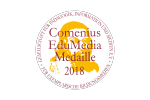You read that right: in this article, we’re sharing some guidelines on how to mind map during a seminar, presentation, talk or conference – in real time. Whatever the topic is, creating a map of the information shared will be of great help for you to remember it better.
Going to a seminar in your field is exciting: you’re meeting tons of interesting new contacts and are taking in all kinds of knowledge relevant to your profession. No surprise that you might want to take some notes during these times to remember all those pieces of information.
Why a mind map?
From what we have learned, there are two main reasons that guide the choice for mind maps during seminars:
- Firstly, “engagement” – mind mapping encourages active listening. Because you are paying attention to what to write down, you engage with the contents in a way that you would not if you were just transcribing with linear notes or not taking notes at all. By using active listening, you are able to formulate your thoughts and potential questions to the speaker better. It will also enable you to become more critical.
- Secondly, “save time” – mind maps offer a great way to make an overview of a seminar, presentation or talk while at the same time not being too time consuming. It can be a hassle to note down all the information in a linear way, simply because it takes too much time and you might not be able to keep up with the speaker. Additionally, you will be able to quickly and efficiently retrieve all the information you’ve taken in when the conference has come to an end.
Facilitating our brains
We love maps. Mind maps, for instance, are great because they work just like our brains: they radiate information from the centre. Not only that, says lifelong learner and Ph.D. Hazel Wagner. She argues that mind maps facilitate both visual and kinesthetic learning. As humans are visually oriented, many of us are great at recalling information when it’s visualised. And: using your hands while learning, which is called kinesthetic, also enhances memory recall. Simply put, Wagner explains:
“Mind maps work with our brain rather than against it.”
With mind maps, Wagner says, we focus on creating connections between what we have already learned before and what we are learning now. In that way, they can be useful to learning any kind of subject, be it mathematics or marketing skills.
Mapping a seminar
We recently wrote down the basic steps of (mind) mapping. Here’s some key points to keep in mind when working on your map during a seminar:
- When you are going to a seminar, there are often several reasons to do so, whatever the topic of that conference is. You want to improve your knowledge of the field you’re in. And you’re planning to make new connections and sustain the one’s you’ve made before. Or you’re interested in hearing what discussions are ongoing. Before you commence with mapping, it’s important that you determine what specific knowledge you want to get out of it. This will help you build the map more easily.
- For each talk that you join, you can choose to make a seperate map. You can prepare yourself by already writing down the name of the speaker as well as some details about the topic they might speak about. Additionally, do some research into the topic before you arrive, and create a small map of information that you would like to hear more about. This could help you to formulate questions to the speakers at the seminar.
- “You can’t write as fast as someone speaks,” says Wagner in her Ted Talk on how to improve your learning skills. Avoid trying to write down the speakers’ information word by word. That is not how mind maps function: by using keywords and short phrases, you aim to capture the essence of the seminar. Merely select the information that is valuable to you, and write it down in your own words. In order to do so, it is important that you engage in active listening. You might also pay attention to certain signals in someone’s speech that give you cues on its contents:
- Introductions and conclusions often include the key points of importance.
- When a certain concept gets repeated more than once, chances are that it might be useful to remember it.
- Some specific words and phrases signal important information, such as ‘the reason why…’, ‘the next three points…’.
- Soon after the seminar ends, you can go over your mind maps to check whether they all make sense and are complete. This is also the time to use highlighters to mark the most important information and to add images, if you feel like it. This can help you to remember it better in the future, as humans are visually oriented.
Mapping methods
Whenever you watch a presentation, take part in a seminar at your university, listen to a talk of someone you want to hear or go to a conference, make sure to bring pen and paper to draw some maps of the most interesting aspects. This could be either digitally, for instance with Kontextmaps, or by using good old sketchbooks. Just choose what works for you! The best way to do this is by trying several ways to make maps. And: always make sure to go over your maps afterwards to help the information stick in your brain.
sources
- https://www.youtube.com/watch?v=5nTuScU70As&ab_channel=TEDxTalks
- https://medium.goodnotes.com/https-medium-goodnotes-com-6-essential-tips-on-how-to-take-effective-notes-at-conferences-7d1ec98a4524
- https://learningcenter.unc.edu/tips-and-tools/effective-note-taking-in-class/
- https://www.goodreads.com/book/show/80762.The_Mind_Map_Book
Feature image: John-Mark Smith.





